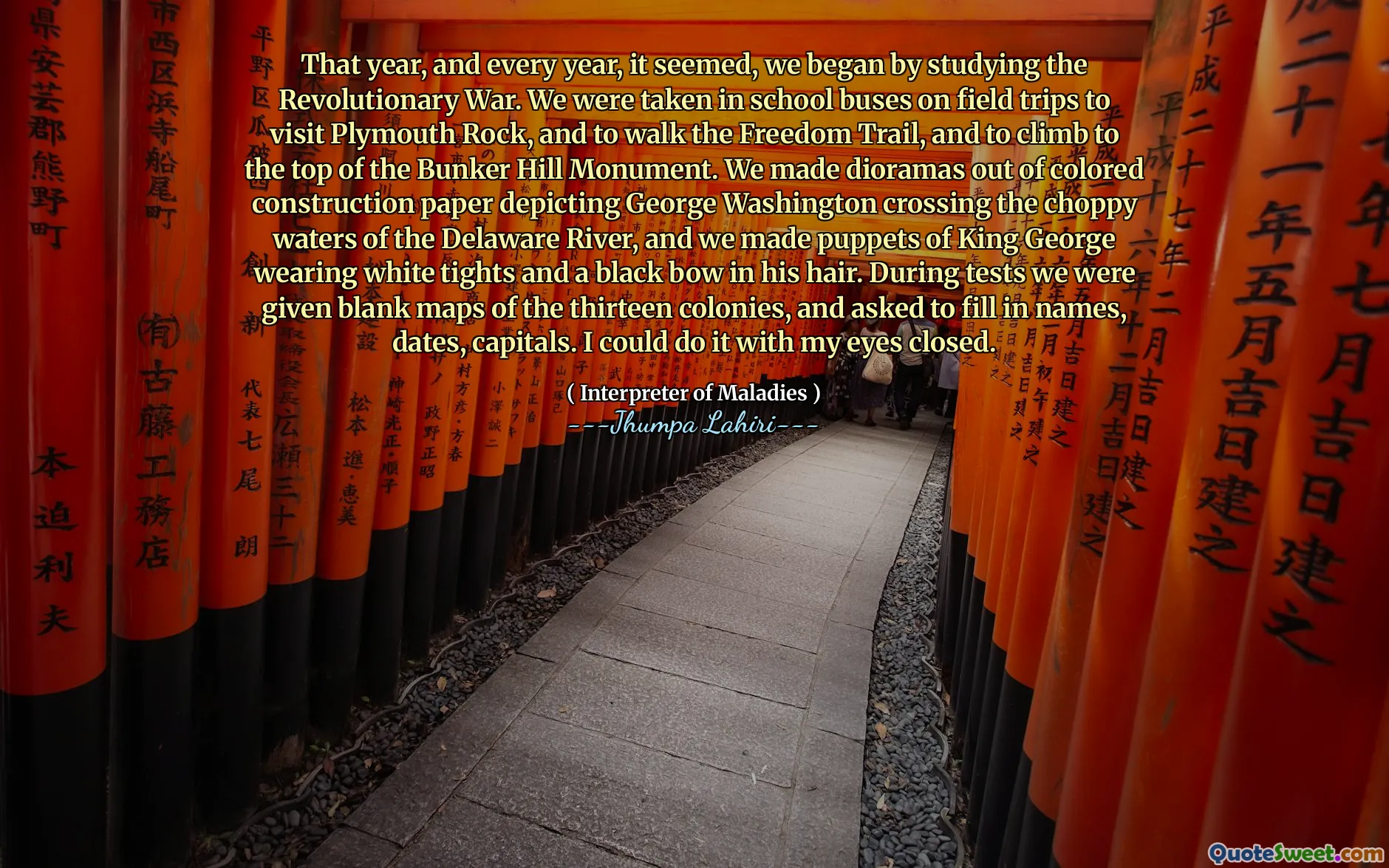
That year, and every year, it seemed, we began by studying the Revolutionary War. We were taken in school buses on field trips to visit Plymouth Rock, and to walk the Freedom Trail, and to climb to the top of the Bunker Hill Monument. We made dioramas out of colored construction paper depicting George Washington crossing the choppy waters of the Delaware River, and we made puppets of King George wearing white tights and a black bow in his hair. During tests we were given blank maps of the thirteen colonies, and asked to fill in names, dates, capitals. I could do it with my eyes closed.
The narrator reflects on their educational experiences during their childhood, emphasizing a yearly ritual of studying the Revolutionary War. Field trips to historic sites like Plymouth Rock and the Freedom Trail allowed students to engage directly with their history. They participated in creative activities such as making dioramas and puppets, which brought historical figures like George Washington and King George to life in a tangible way.
Additionally, the narrator recalls taking tests that required the memorization of the thirteen colonies' names, capitals, and significant dates, showcasing the emphasis on rote learning. This immersive approach to history made the lessons memorable, and the narrator expresses confidence in their ability to recall the information, demonstrating the impact of these formative experiences on their understanding of American history.





